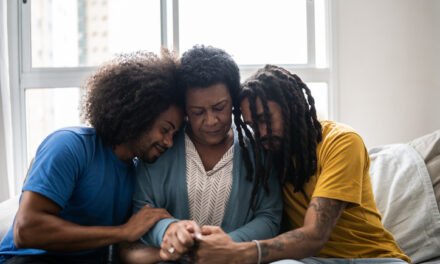
On Tuesday, we wrapped up our Virtual Learning Lab series on the #MeToo Movement with a Bold, Inclusive Conversation™, in which we delved deeper into some of the topics covered in the first two labs and wrapped up with some strategies for implementing change and cultivating a practice of self-care. It was a powerful conversation among not only our panelists, but also our participants, particularly those who were joining us for the third time and could share their own ‘aha’ moments and learnings with the group.
We will certainly be continuing these conversations into the future, as unfortunately, we seem to just be at the tipping point of this movement. However, this tipping point is also an opportunity. Now that we are uncovering the injustices, we can begin to rebuild.
So, how do we rebuild? What, exactly, are we rebuilding? Below, I’ve tried to capture some of the key takeaways and learning moments from our conversation on Tuesday that I think speak to these questions of rebuilding.
It’s time to move beyond the interpersonal. The interpersonal is a symptom of the system. Microaggressions are manifestations of a larger system of misogyny, which, as we learned in the second lab, is the set of practices that police the patriarchy. Why do men talk over or ignore women? Why do we call adult women “girls”? Why do we ask women to perform administrative tasks below their pay grade? In short, we are putting women in their place. We are saying, “Women may be at the table, but they will not threaten the existing power structures.”
I say “we” because, as a woman, I have to face the fact that I’ve participated in behaviors that box women in as well and diminish their power. How many times have I thought a woman was being too bossy or aggressive? How many times have I failed to acknowledge my own power as a white woman in this intersectional world? It’s not just personal – it’s systemic. The sooner we recognize that, the sooner we can cultivate solutions that address all levels of the problem, not just the surface.
Privilege and power are not possessions. When we address issues of power and privilege, we need to change the narrative. It’s not a question of whether you have it or you don’t have it. Both exist on a spectrum, and both are more about the way the world treats us than the things we possess. We all experience having both power and privilege in some aspects of our lives.
For me, as a straight, white woman, I experience racial and heterosexual privilege. As a woman, I experience a lack of gender privilege. However, in both instances I experience power. Power is not something that can be given or taken away as much as it is a reality that is either acknowledged and uplifted or diminished and ignored.
In the instances in which I have privilege, my power comes from standing with and elevating the voices of those who are not privileged in the same ways. In the instances in which I lack privilege, my power comes from existing—asserting my whole self and taking up space in a world that tries to limit my space. It comes from building a critical mass of other women who acknowledge our own power when others will not.
You can’t know what you don’t know, but let’s keep asking questions. This series brought out many ‘aha’ moments for me and many moments of challenge. I know this is true for our other panelists and for our participants, and so I think it is important that we acknowledge that the journey of wading through our questions together, with curiosity and generosity, is a journey worth continuing.
We must keep asking questions of both ourselves and of one another. As Mary-Frances Winters says often, when we react to something someone says or does negatively, we should first look inward. We should ask ourselves, why? Why am I feeling this way? Only then can we have a dialogue that assumes positive intent. Speaking of intent, is my intent matching up with the impact my behavior is having on others? If not, how can I begin to bridge those gaps?
During our Tuesday lab, Charles Jackson asked the men in particular to ask themselves how they feel about this movement and about their interactions with women in light of this movement because men are often told not to pay attention to their feelings, but to repress them. This was a good example of where we should all start—by asking ourselves how we feel and getting curious about how we may be making others feel. As we move forward, if we are going to continue asking others to share with us in authenticity, we have to commit to being authentic ourselves. Which brings me to a third and final takeaway…
Love yourself. This last takeaway may seem overly simplistic or too cliché, but in reality, it may be the hardest to live out and the most important. Part of rebuilding new systems is rebuilding our ideas about ourselves – liberating ourselves from limiting self-images based on these inequitable and damaging systems that we are trying to break down. Just as women are limited in obvious ways by the systems of patriarchy we’ve been addressing in these labs, men are limited too. So, now that we’ve begun to reveal those limitations, let’s start to shatter them.
Men, don’t limit yourselves to roles of dominance. Instead, what could a non-dominant, authentic masculinity look like? Women, don’t limit yourselves, to the extent that it is possible, to the roles that are expected of you. Stand in your power and in your truth and lean on the women and allies around you when others want to dismiss you.
What do we need to rebuild? Our systems, policies, practices, etc. But most importantly, we need to rebuild a culture that recognizes the power in each of us and that amplifies the truth in each of us. We need to rebuild a culture of authenticity. How do we do that? By asking questions that move us beyond the surface, by rejecting power as possession, and by standing in the reality that loving ourselves means refusing to diminish ourselves. Let’s dig deep; let’s build; let’s love.


















